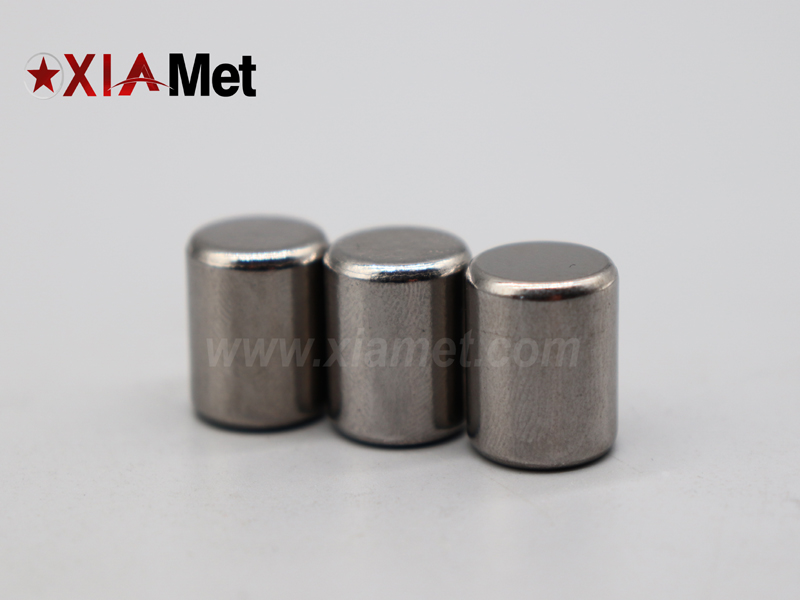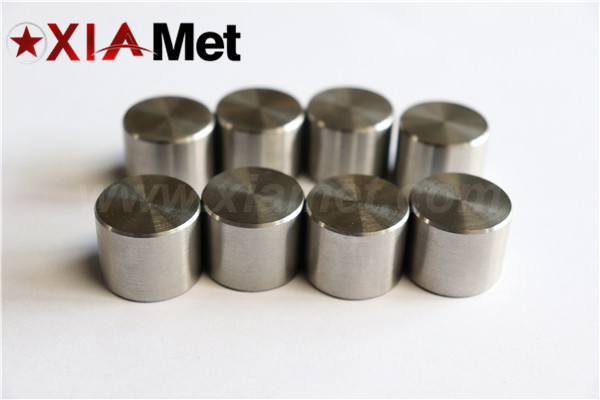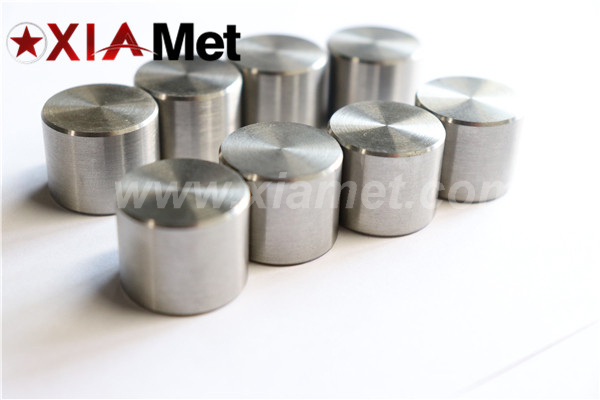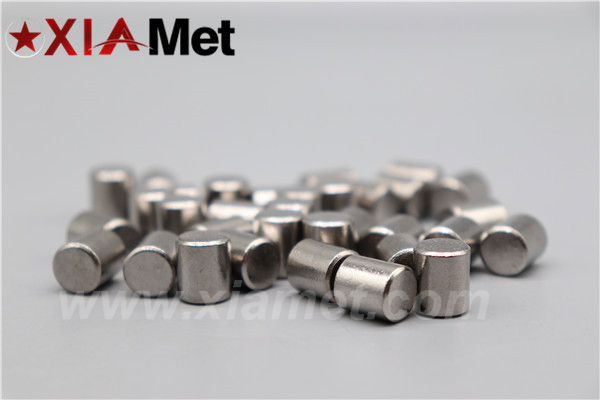Product introduction
Item name:Tungsten weightMaterial:W-Ni-Fe, W-Ni-Cu
Standard:ASTM-T-21014/ASTM B 777-07
Packaging:Plywood wood case
Application:counterweight, radiation shielding
Brand name:XIAMET
Place Of origin:China
Inquiry us:sales@sxxinheng.com
Tungsten alloy counterweight
Tungsten heavy alloy is becoming more and more popular for counterweight, balance weights for flywheels,
ballast for F1 formula car, racing weights, dynamic balancing, etc. It is the best material of tungsten alloy
for the balancing weight, and has been widely known and applied.Drivers consistently report they can sense
differences in how a car handles on the track if the weight on a given wheel varies only by a couple of pounds.
Fine tuning a car to a given track is a very cumbersome and time consuming ordeal with conventional lead
plate weights. tungstenalloy weight blocks offer up to 50% more weight in a given volume, with the added
advantages of direct attachment via threaded holes or thrubolting and the freedom from deformation. The
high density of WHAs permit weights to be placed in the lower half of NASCAR weight adjustment tubes,
effectively lowering the overall center of gravity for improved handling. Tungsten product has a specialized line
of racing weights for these applications.
Reasons for choosing tungsten heavy alloy as counterweight
Tungsten heavy alloy (WHA) balance weight of racing car is now becoming the most popular material for ballast,
due to its main advantages as follows:
1. Highest density
Adding WHA balance weight into the whole framework of a racing car is helpful to optimize the performance of
the racing car during the racing progress, which contributes to the better control of the car's movement.
2. High tensile strength and good creep resistance
Tungsten has high tensile strength and good creep resistance with a high mass/size ratio, so it will be the ideal
to work in a restricted space.Its high density also gives enhanced sensitivity by increasing the control of load distribution.
3. Machined Easily
WHA is also easily machineable which gives designers greater flexibility in deciding on the final shape of components
and offer designers several advantages over conventional balance materials e.g. lead or steel.
Tungsten alloy counterweight can be used in:
1. Automotive
High environmental compatibility, lower fuel consumption, and improved electronics for more comfort and safety
in modern vehicles set high demands for applied materials. Tungsten and molybdenum products of us made
from high performance materials advance to new levels of achievement and guarantee maximum efficiency.
Increasing service temperatures and compact, spacesaving designs are the demands of the engine generations
of the future. High performance tungsten and molybdenum products are best suitable for applications in engines
because of their mechanical, chemical, physical and tribological properties. Components made of tungsten heavy alloy
with densities up to 18,5 g/cm3 are well-suited for highly effective crankshaft and flywheel balance weights in standard
production cars, in racing, shipping or the industrial engine sector.
2. Motor Sport
The minimum weight requirements of motor sport formulae are often met with ease as more exotic materials give
designers the ability to create lighter and stronger components in the search for greater performance.
Adding our ballast weight helps to provide competitive advantage by giving the ability to add ballast within confined
spaces in exactly the correct place to both trim the weight distribution and lower the centre of gravity of a competition
car and still meet the minimum weight requirements.A lower centre of gravity can also be achieved by adding tungsten
skid plates, which also protect the lower parts of the chassis, especially important in F1,
where a ride-height monitoring plank is used.
3. Engines
Due to its very high density, our tungsten heavy alloy is an ideal material for suppressing vibration in static or moving
components. Applications for our tungsten heavy alloy include: Crankshafts, pistons and gear levers in high performance
cars; Turbine blades; Flywheels.
Wheel weights
Wheel weights often fall off automobile wheels, leading to lead contamination of the environment.
There is a thriving market in lead-free wheel weights. European and Japanese automobile manufacturers have
already switched to lead-free wheel weights and U.S. automobile manufacturers are currently in the process of making
the switch. Asian auto manufacturers now primarily use tungsten alloy weights. Tungsten alloy weights are used widely
in Europe, and US auto manufacturers are using tungsten alloy weights for automobiles destined for export to Europe.











